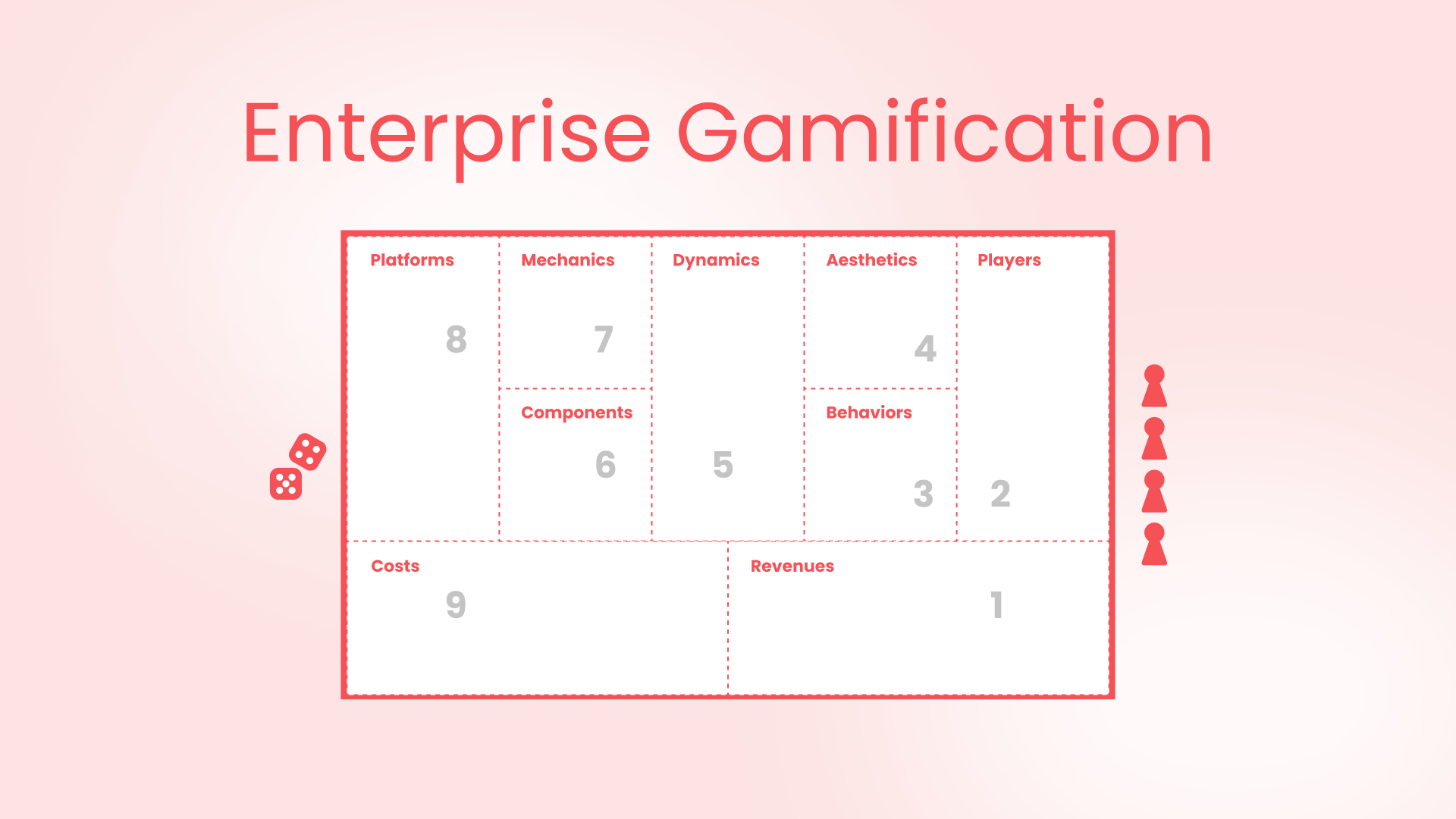
In short, gamification is the introduction of game mechanics, interactions and components in non-game environments. The concept of gamification has become very popular over the last decade but together with popularity came a wave of misinterpretation, misuse and overuse.
What about it
The reason why gamification became so popular is that it can be a great tool for behavior design, which means it can help us change how – and how much – people interact with a system. Games are well known for creating extremely engaging – and in some cases even addictive – interaction environments. Gamification provides with opportunities to increase user engagement with non-game systems and thus (positively) affect user behavior in the context of work as well. Imagine the possibility of making mundane task completion feel a little more like a quest, or making users within a specific team to feel a little more like comrades, or reaching a project milestone to discover you have unlocked a special new feature. Sounds good, doesn’t it?
Unlike games though, when we are working on an enterprise system chances are we want the gamification model we design to be purposeful and help us achieve specific outcomes that are unique for every business. At the same time we want the gamification elements to make sense in the context of a particular workflow, which again will look very different from business to business and even for different user types within the same business. And more often than not, we want behavior change to be measurable, so that it can also be manageable.
The gamification model canvas
So what is a gamification model and what is it made of? Simply put, it is a framework to help you incorporate behavior design elements in a systematic way. The model, as described in the gamification model canvas, is made of 9 distinct elements that need to be thoroughly defined and designed to work together in harmony.
Revenues
What are the business and user benefits we are looking for with the introduction of gamification? What is the purpose of all this work? What results are we after and how will we know we are getting them?
Players
Who exactly are the people we are designing this for? What are their roles, duties and existing workflows? What is their level of experience? What do they want and need and what obstacles are they facing? (Did anyone say ‘user research’?)
Behaviors
How does their behavior need to change in order for them and for the business to derive the benefits of the gamification scheme we are designing? What activities do they need to spend time on? What actions do they need to take? What do they need to do more of/less of?
Aesthetics
What is the emotional landscape that the gamification introduces and how will it change as the user interacts with the system? How will we grab and keep users’ attention? Where is the fun part for them? In what ways is it fun?
Dynamics
What conditions and situations (progression, rewards, status etc) can produce or amplify the desirable emotional responses?
Components
What UI components will we introduce to convey the dynamics and build the game mechanics we have chosen? What are the visible and actionable elements of the user interface that players interact with? Eg. missions, badges, leaderboards, avatars, progress bars etc.
Mechanics
What are the underlying rules and restrictions of the game that make it meaningful and worthwhile for the players to interact with components? How will the components be used to drive behavior change? How will the mechanics keep users’ interest as they develop skills and competence?
Platforms
Where is the game taking place and what other (external) platforms are affected by the gamification?
Costs
What resources (money, time, effort) will it cost the team to design, test and implement a successful gamification scheme?
Recipe for (not) failing
If it’s all so simple and straightforward, then why have so many gamification attempts failed, one might ask. First of all, it is neither simple, nor straightforward. Putting your gamification elements in place is a great place to start, but like any user-centered design effort you will need to create drafts, refine, prototype, test your work and iterate until you set all the details right and balanced. Secondly, every business is unique. The type of gamification that works like a charm for an enterprise may have immediate negative results in an other case. A gamification scheme is a highly custom solution to a unique set of problems and restraints for a very specific and, hopefully, well-researched audience.
That said, there are 2 very common reasons why an attempt to gamify enterprise software may fail.
Reason 1
You are trying to use gamification to fix problems caused by your business model and processes, company culture, poor leadership, workplace politics etc.
Yes, gamification can boost employee engagement with the enterprise software and empower teams to achieve more and work with less perceived effort, but this doesn’t mean you can avoid fixing the root cause of disengaged employees. Your gamification efforts won’t work if the reason for low engagement is that your people are unhappy, feel unheard, misunderstood, ignored and overridden and your teams luck direction and a clear vision, if roles and duties are unclear and your business suffers from a toxic culture.
Reason 2
You are using UI gamification elements like badges and leaderboards unsystematically, inconsistently, superficially.
As mentioned before, a gamification scheme is made of several elements, some visible and others invisible, that need to be carefully researched and articulated to make a concrete, purposeful solution. Not only that, but since we are working to gamify a professional tool even the slightest change on the looks and behavior of the system can have a disruptive (in the most negative sense) impact on the end users’ task flow, focus and productivity. It is a common mistake to think of gamification as the plain introduction of avatars and badges and point systems, but we cannot afford to mindlessly introduce “cool UI features” that are neither supportive nor related to the users’ work context.
Gamification has often been blamed as ‘overrated’, unfairly, while it was only being misused or overused and so it couldn’t lead to a successful outcome. Before jumping to dismissive conclusions, let’s make sure we are not using it as an afterthought to fix low engagement, and let’s also make sure that we have properly weaved the gamification elements into the very fabric of the enterprise system we are working on.
